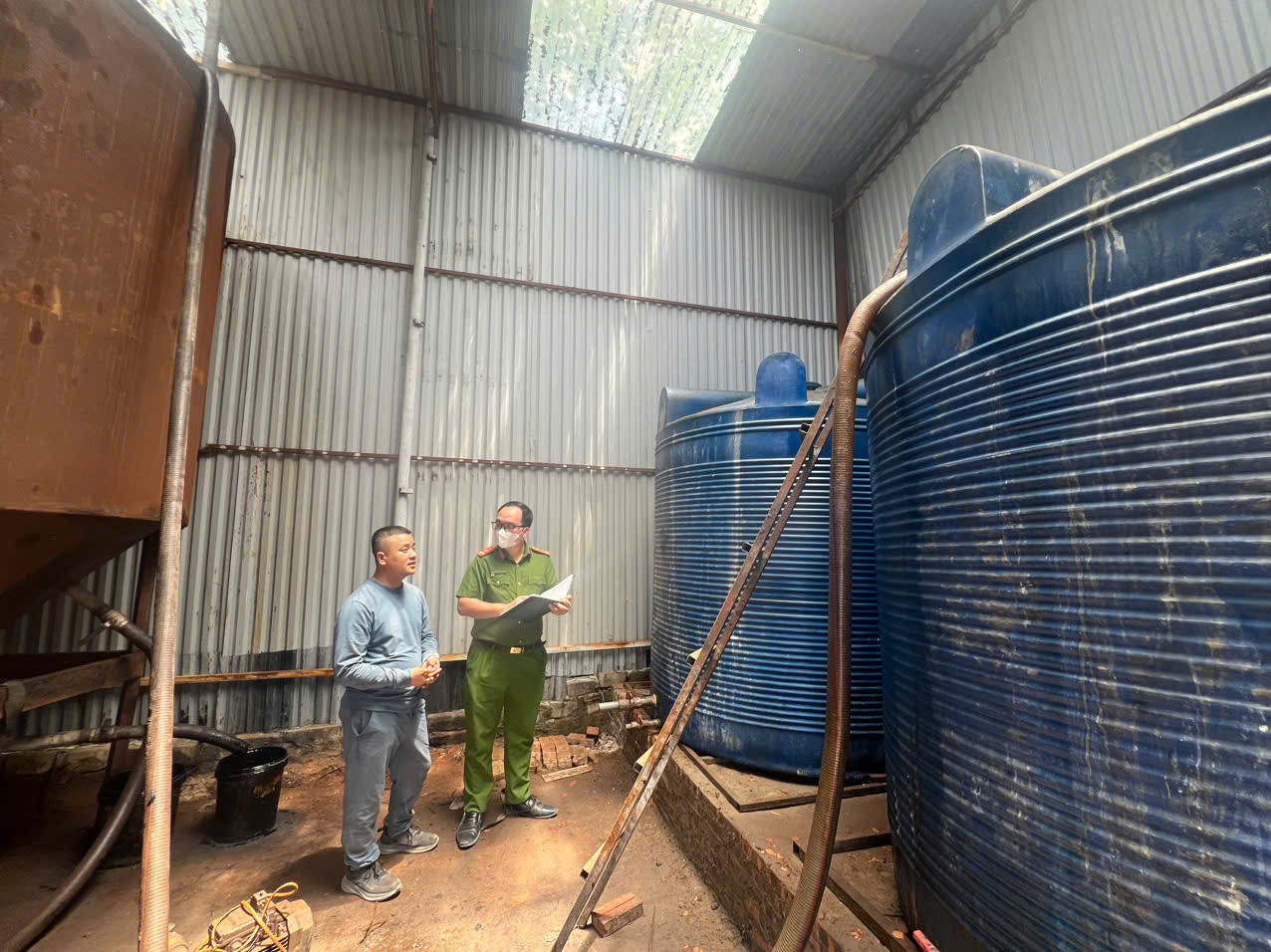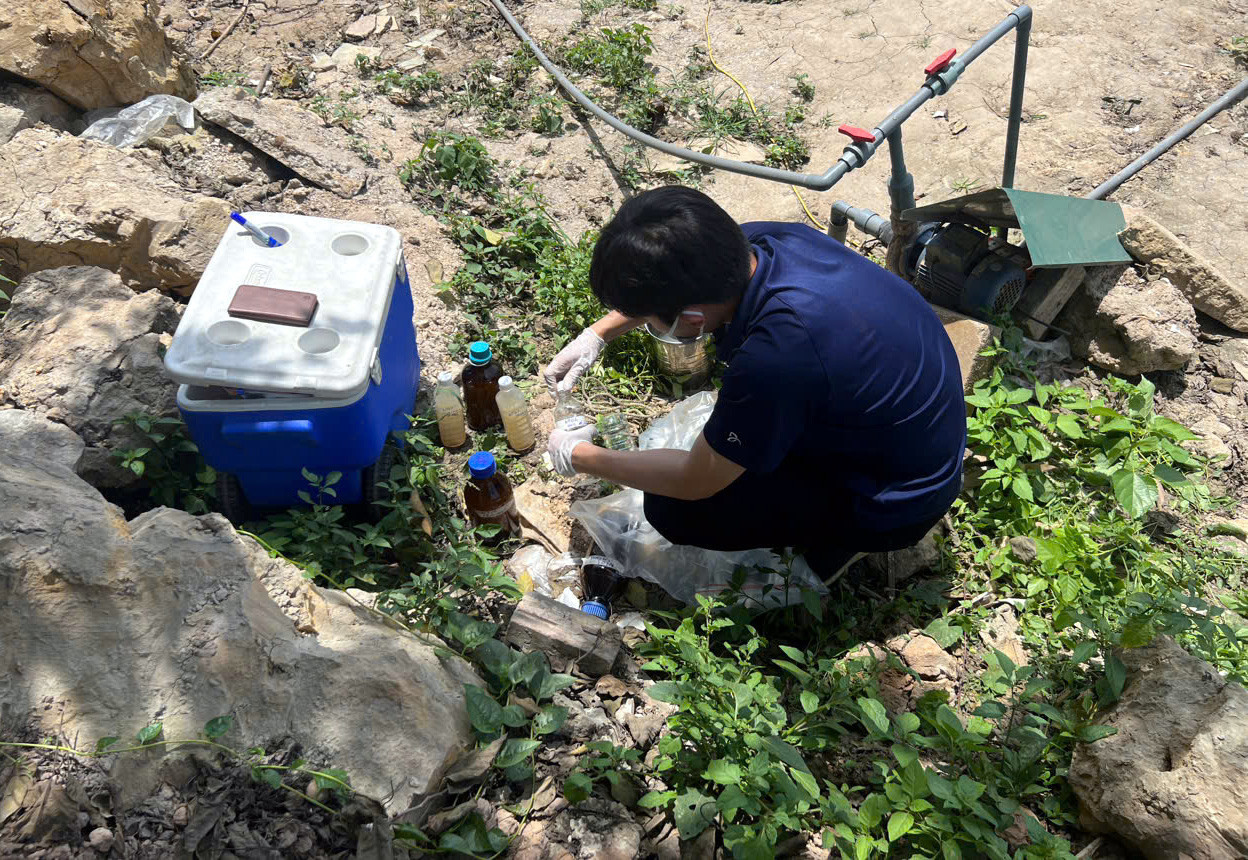On May 5, the Hanoi Police Department’s Criminal Investigation Division officially launched criminal proceedings against Bui Quoc Giang for violating environmental regulations by illegally discharging hazardous waste oil during his recycling operations.
According to police reports, since 2014, Giang had been collecting used oil from auto and motorbike repair shops in Hung Yen, Thai Binh, and Hanoi. He would then recycle the oil and sell it to businesses for profit.

At 10 p.m. on April 14, the Economic Crime Division (specializing in industrial and construction violations) under the Hanoi Police conducted a surprise inspection at Lot 42, Ha Hamlet, Thien Duc Commune, Gia Lam District.
Authorities discovered an illegal waste oil recycling facility operated by Bui Quoc Giang (born 1989, residing in Thang Loi Commune, Van Giang District, Hung Yen Province). The site showed clear signs of illegal disposal of hazardous substances into the environment.
Police, in coordination with the Forensic Science Division, the Hanoi People’s Procuracy, and local Thien Duc authorities, searched the facility and seized more than 1,495 kg of chemical wastewater and 6,950 kg of dry oil sludge generated from the recycling process.
Investigations revealed that Giang instructed employees to dump the toxic waste into a 14-meter-long pit dug just outside the workshop.
During interrogation, Giang confessed that he started recycling oil in late 2018 after seeing others earn high profits in the industry. He initially set up a recycling plant in Nam Dinh Province.
However, after facing strong opposition from locals and authorities due to pollution concerns, he relocated his equipment multiple times to avoid detection.

In October 2024, Giang established a new facility at Lot 42 in Thien Duc Commune and resumed operations in mid-December 2024. The site processed approximately 3,000 to 4,000 liters of used oil daily, yielding 2,000 to 2,500 liters of recycled oil.
The remainder consisted of hazardous waste materials such as sludge and chemical residues, including acid and hydrogen peroxide. On average, only 70% of input oil was converted into usable product, with 30% resulting in chemical waste.
Analysis of the 6,950 kg of seized sludge confirmed it to be hazardous waste under environmental regulations.
Tien Dung